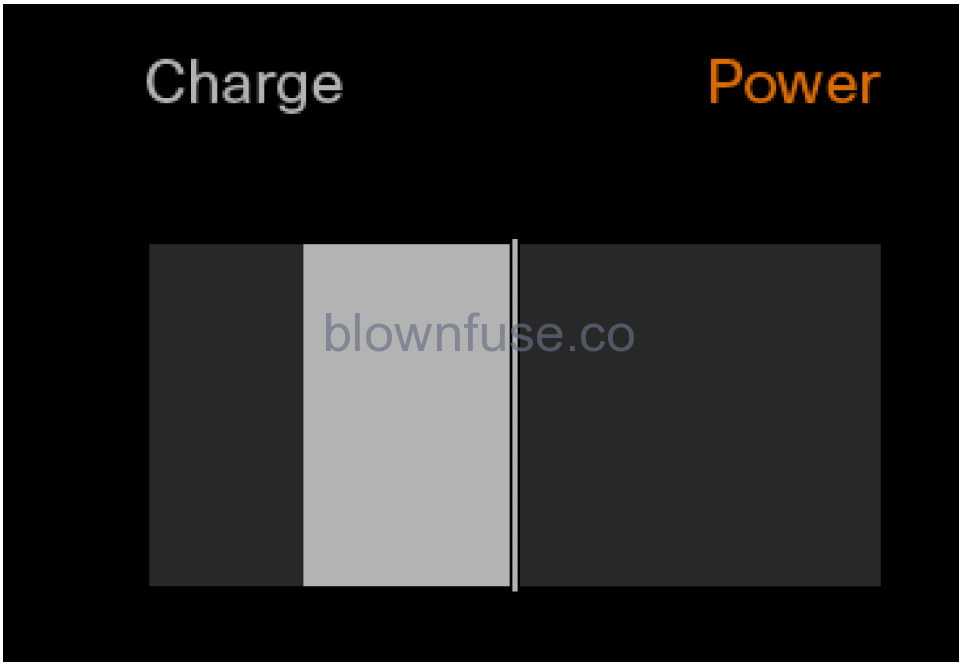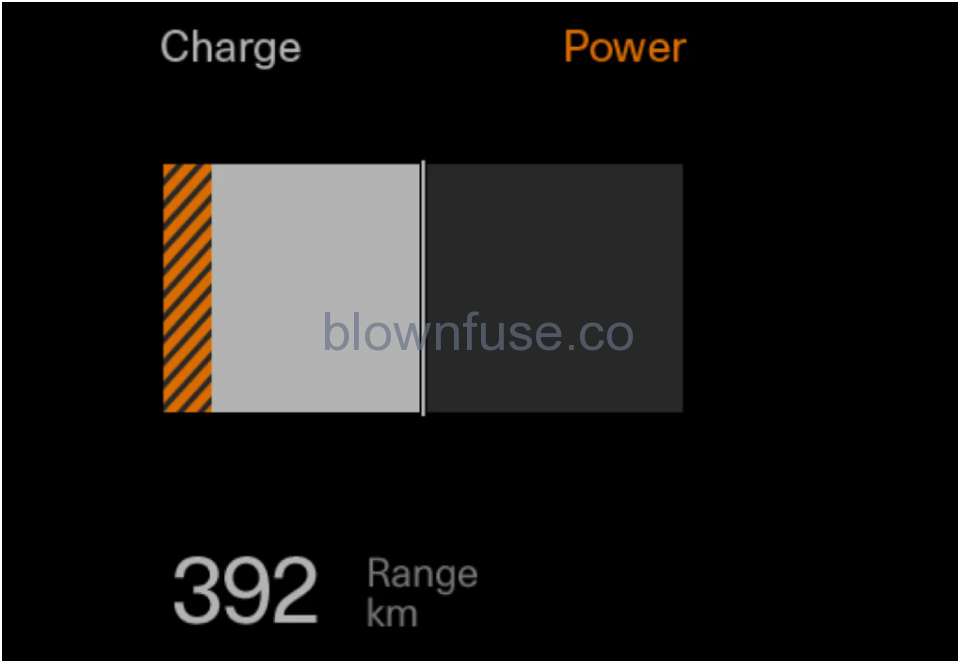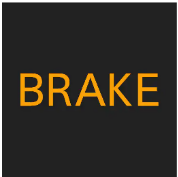2023 Polestar 2 Foot brake
Brake Assist System
The system monitors the driver’s braking habits and increases braking force when necessary. Braking force can be increased up to the point at which the ABS intervenes. The function is deactivated when pressure on the brake pedal is decreased.
Brakes
The vehicle is equipped with two brake circuits. If one brake circuit is damaged, the brake pedal will go down further when depressed. More pressure will then be required from the driver for the normal braking effect.
The power brakes only work when the vehicle is in driving mode.
If the brake pedal is used when the vehicle is not in driving mode, greater pressure must be applied to brake the vehicle.
Anti-lock brakes
The vehicle is equipped with an Anti-lock Braking System (ABS), which helps prevent the wheels from locking and helps maintain steering control when braking.
After the vehicle is started, a brief test of the ABS system is automatically performed when the driver releases the brake pedal. An additional automatic test of the system may be performed when the vehicle is traveling at a low speed.
Light braking charges the battery
During light braking, the vehicle’s kinetic energy is converted into electrical energy, which is used to charge the battery. When the battery is being charged, this will be indicated in the instrument panel.

Charging indication in the instrument panel.
This function is active at speeds in the range of 150-5 km/h (93-3 mph). During harder braking, the hydraulic braking system is used to augment braking. This is shown in the instrument panel with an orange indicator to the far left in the brake gauge.

Polestar recommends braking hard regularly using the friction brakes to avoid problems with the brake discs caused by inactivity, such as rust or accumulation of dirt.
| Symbol | Meaning |
|---|---|


|
Check the brake fluid level. If the level is low, fill brake fluid and check to determine the reason for the loss of brake fluid. |


|
Fault in pedal sensor. |


|
Steady glow for 2 seconds after the vehicle is started: Automatic function check.
Steady glow for more than 2 seconds: Fault in ABS system. The vehicle’s regular brakes will still work, but without the ABS function. |
 |
In the event of the message: Brake pedal characteristics changed Service required
The brake pedal must be depressed with greater force past the normal braking position in order to brake the vehicle. |
If the warning symbols for both brake fault and ABS fault are lit simultaneously, there may be a fault in the brake system.
- If the level in the brake fluid reservoir is normal when this happens, contact Polestar Customer Support.
- If the brake fluid has fallen below the MIN level in the brake fluid reservoir, the vehicle should not be driven until the brake fluid has been filled. The reason for the brake fluid loss must be checked.
Braking on salted roads
This could increase stopping distance. Maintain an extra-large safety distance to the vehicle ahead. Make sure to also:
- Apply the brakes from time to time to help remove the salt. Make sure braking does not pose a risk to any other road users.
- Gently apply the brakes when you have finished driving and before driving again.
Braking on wet roads
This may also occur after washing the vehicle. It will then be necessary to apply greater pressure to the brake pedal. You should therefore maintain a greater distance to the vehicle ahead.
Firmly apply the brakes after washing the vehicle or driving on wet roads. This helps warm up the brake discs, enabling them to dry more quickly and protecting them against corrosion. Consider the current traffic situation when braking.
Maintenance of the brake system
To keep the vehicle as safe and reliable as possible, follow the Polestar service intervals specified in the Status and Warranty booklet.
After replacing brake pads and brake discs, the braking effect is not adapted until they are “broken in” by driving a few hundred kilometers (miles). Compensate for the reduced braking effect by applying greater pressure to the brake pedal. Polestar recommends only using Polestar-approved brake pads.
Following long-term storage of the vehicle, check the brakes by driving the vehicle slowly for a short distance. Depress the brake pedal five times (hold down for five seconds each time).
The brake system’s components should be regularly checked for wear.
Contact Polestar Customer Support for information on procedures.


